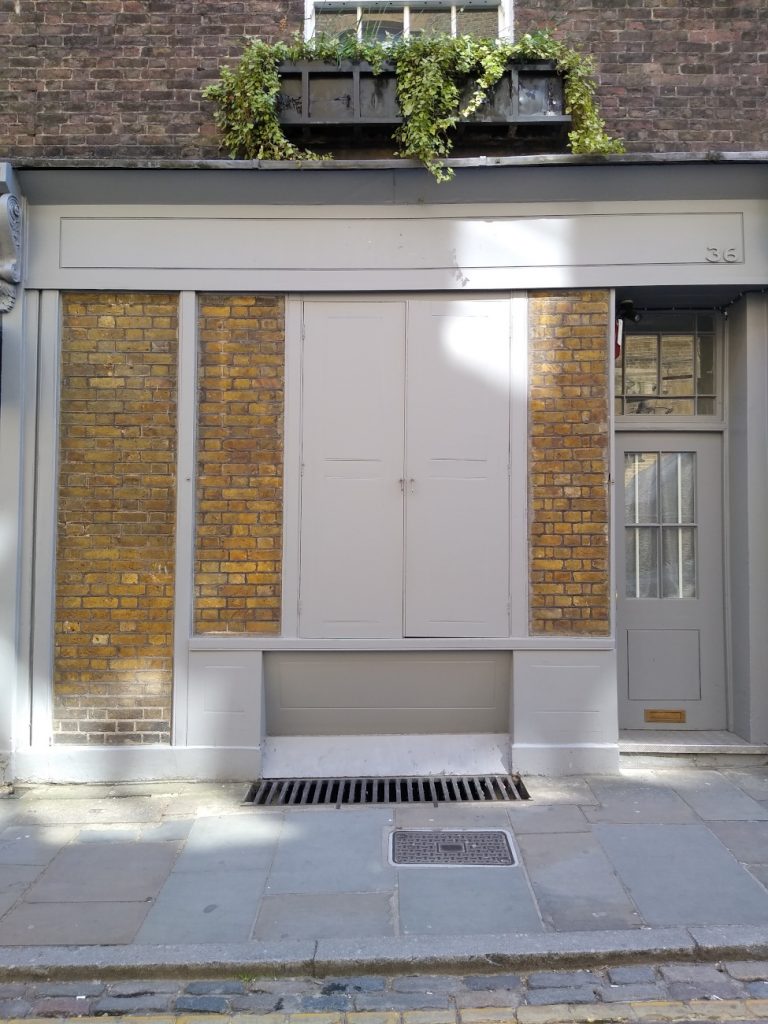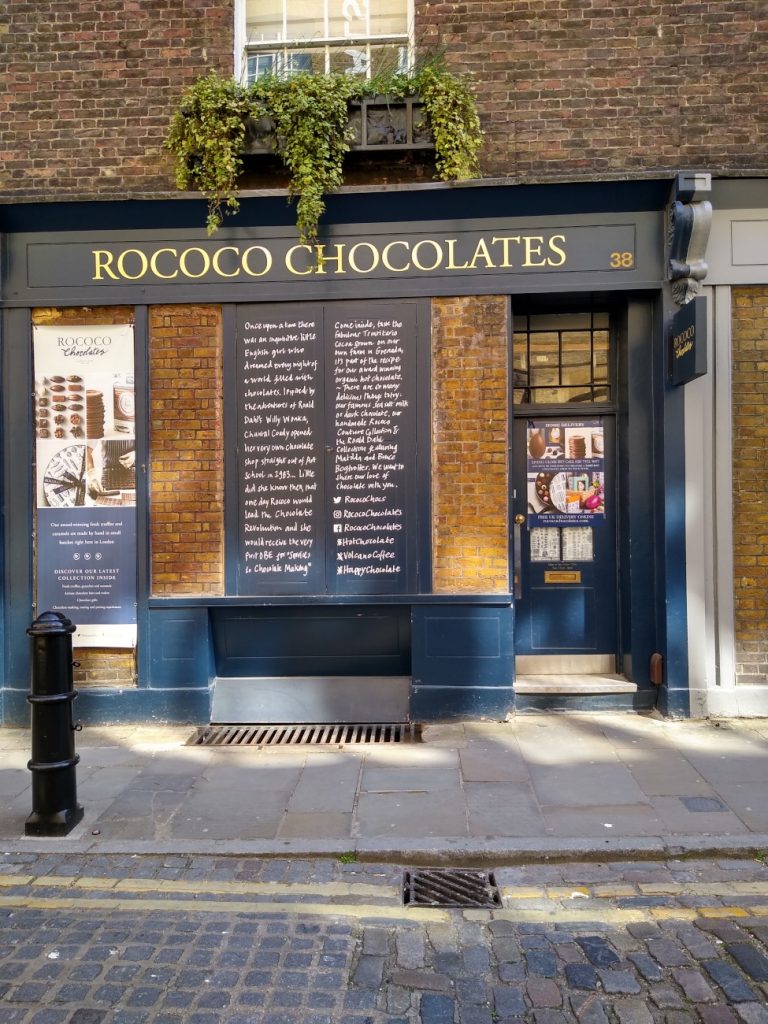Before the 1830s, shop windows were closed at night with wooden shutters, held in slots within the stall board and the soffit of the fascia and secured with iron bars. Some sets of original shutters survive in Seven Dials, in Earlham Street, Short’s Gardens and Tower Court.


It is important to consider shop security early in designing a new front so that whatever method is used can be incorporated as unobtrusively as possible. Glazing bars can be reinforced behind with iron or steel, and a brick or concrete wall can be built behind the wooden stall riser if that part of the front may be vulnerable to break-in or vandalism.
Solid roller shutters and projecting roller shutter box housings generally detract from the appearance of a shopfront. Tough laminated glass or internal lattice shutters are generally more suitable alternatives. Removable mesh grilles fitted over the window are cumbersome but are considered more appropriate than fixed shutter systems. External security shutters normally require planning permission and, in the case of listed buildings, Listed Building Consent.
An alternative means of protection for shopfronts is the application of a security film to the inner face of the glass, which forms a low profile system almost invisible after installation. It has been specially developed in various thicknesses up to 7000 (thou). It has considerable flexibility and elasticity and the combined strength of the film and glass considerably reduces the chance of the glass breaking during any attack.